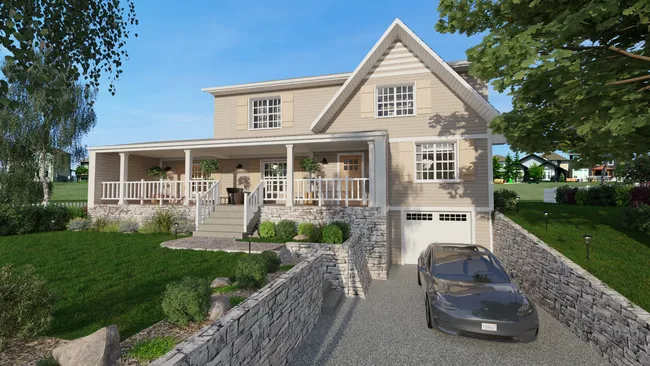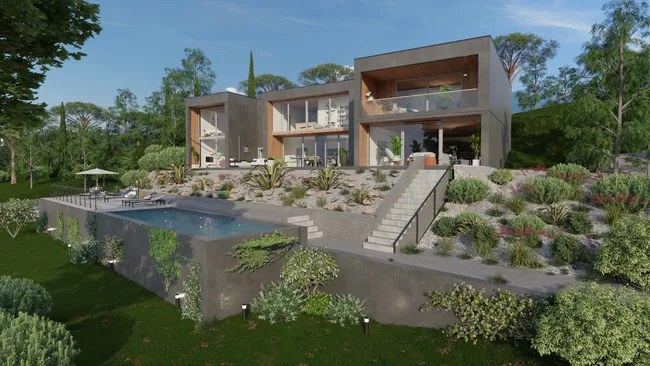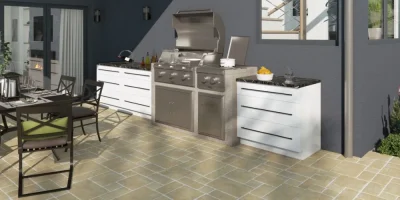You don’t have to be an architect to design homes that people love. You don’t have to be an architect to make a living designing homes, either. It’s not that there’s anything wrong with being an architect — it’s just that there is a middle ground, an intermediate step: becoming a professional home designer.
This is a growing career path that involves separate certifications and even distinct skill sets, but the end result is the same: You build a career on building homes.
While becoming a certified home designer may not be as long of a process as becoming an architect, that doesn’t mean that you can simply decide to start designing homes and have anyone take you seriously. Just like building a home, you have to lay the foundation of a home design career before you can move in. Here’s how to do that. Read on to learn how to become a professional home designer.
What is a Home Designer or Building Designer?
Basics first: What is a home or building designer? Also known as residential design professionals and professional home designers, building designers are professionals who assist in the creation of safe residential buildings.
They are not interior designers or architects or even design-build professionals. Home design is a distinct role in which you might help a homeowner create a safe and up-to-code building in which to live. You might also assist with home renovation design or be a part of a design-build team.
In general, certified building designers work on single- or multi-family homes. Although there are some exceptions, these professionals do not typically work on large residential buildings like apartments or commercial buildings.
Some countries and states require home designers to obtain professional certification, while others do not. In any case, obtaining professional certification can bolster your credentials and further your career as a professional building designer.


How to Become a Home Designer
Becoming a professional home designer means stepping into an exciting and fast-paced career field, but before you do that, you have to satisfy a few important requirements. Here’s how to become a home designer:
Certification Process
While certification isn’t always a direct requirement to become a professional building designer, it’s usually a good idea. Even if your location doesn’t require the certification, it is a great way to set yourself apart from other home designers and get more work.
But what does the certification process look like? To become a certified home designer, complete the following steps:
- Get at least six years of home building and home design experience. This experience can come from a combination of certified coursework and on-the-job experience (as long as your employer is willing to fill out a form attesting to your experience on the job).
- Get three letters of verification from people you know in the home design and home building field. These letters are like letters of recommendation — they say you are experienced, professional and ready to take on the challenge of becoming a certified home designer.
- Pay an application fee (not refundable), fill out the application and submit it.
From there, all you have left to do is wait until your application is either approved or you are invited to take a certification exam (depending on the requirements in your specific location).
On-the-Job Training
How are you supposed to get experience as a home designer if you have to already be certified to become one? By finding lower-level jobs that expose you to the industry and the professionals within it.
To do that, search online job listings for entry-level jobs or internships that will allow you to work with architects, home designers or similar professionals. Better yet, if you are currently attending a technical college, community college or university, reach out to your school’s career resources center to ask for help finding the work experience you need.
There are plenty of kinds of work experience that might help you — just make sure what you’re learning is actually relevant to home building and design.
Certification Exams
If you’re located in the United States, you will need to be certified by the National Council of Building Designer Certification. To do that, you will need to pass an online, open-book exam within three years of submitting your application and letters of verification.
The required grades for passing the exam may change from year to year, but you generally will need to get a majority of the questions correct. The subject matter is mostly home design, but some related subjects may appear on the exam.
Continuing Education
As is the case with any professional career that requires a license or certification, you will likely need to complete continuing education courses or credits each year after you’re certified. Usually, the certifying organization will provide resources on how to find continuing education opportunities online or in your area.
Conclusion
Becoming a professional home designer is a smart career choice that countless talented individuals make every year. If you decide to be one of those individuals, you will face a relatively involved certification process. But when you come out on the other side, you will be ready to start your career as a certified professional home designer and turn it into something great.
To help you as you build your career or business as a professional home designer, make sure you pick the right floor plan software. Cedreo works hard to provide the most powerful, user-friendly floor planning software in the industry. You don’t have to be an architect to design breathtaking and complete homes — you just have to use Cedreo. Try Cedreo for free today.



